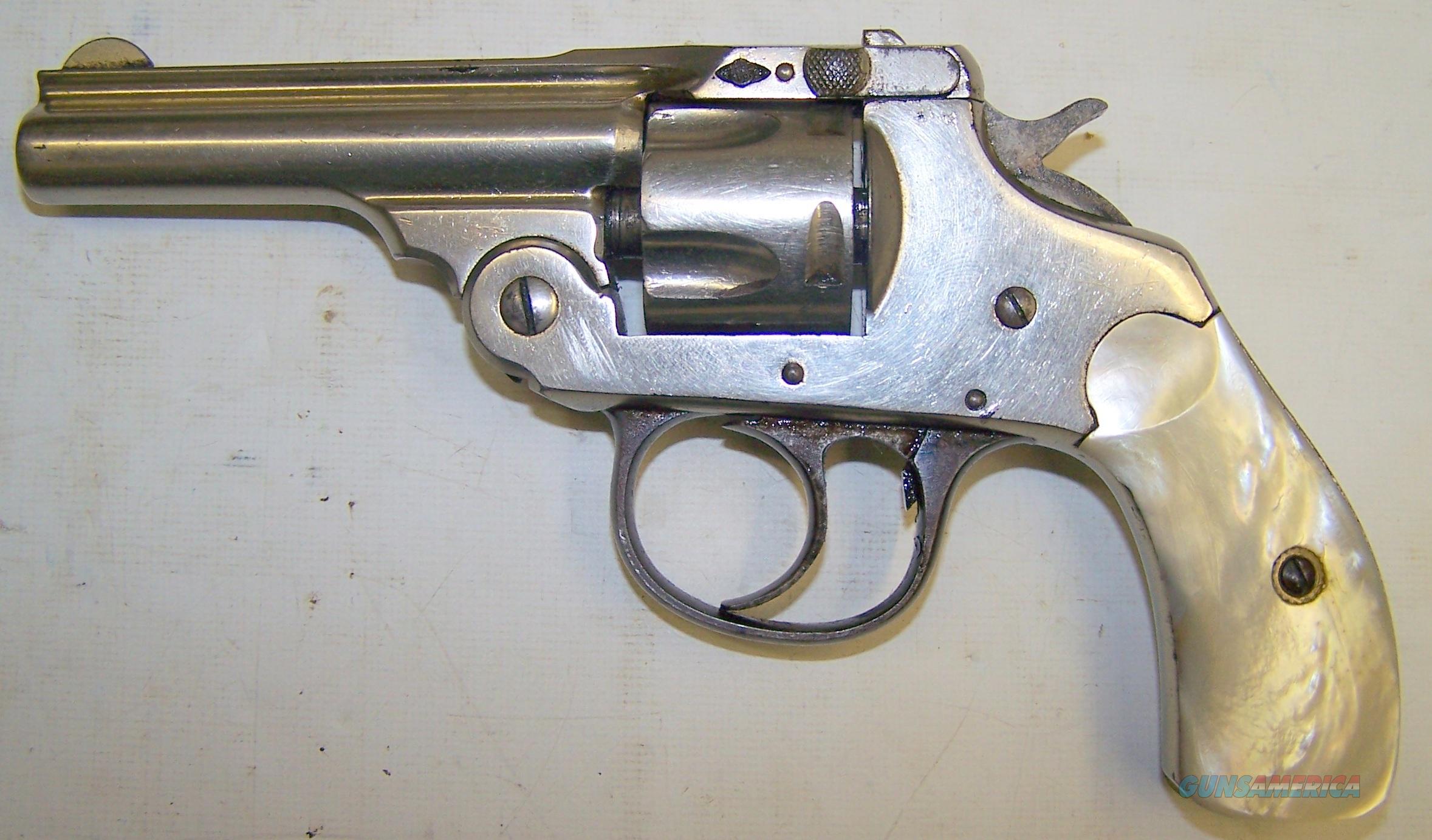

Their most distinctive feature (when vetting other old top-breaks) is the distinctive “owl head” logo found on the grips.
#Iver johnson top break grips removed series
Production ceased in 1941, making them all C&R eligible with the bulk of the Second Models and the entire First Series classified as pre-1898 antiques. Today, these old top breaks can run anywhere from $20 for complete but nonfunctional revolvers, to pristine shooters for $175. However, notoriety still followed them as an Iver Johnson Cadet was used by an assassin to kill presidential candidate Robert Kennedy in 1968.

50 BMG sniper rifle, etc., with no real innovations like their initial efforts. The company produced a variety of other revolvers later in the twentieth century as well as shotguns, M1 Carbines, a.
#Iver johnson top break grips removed serial number
It was one of these, serial number 463344, that anarchist Leon Czolgosz shot President William McKinley with in 1901. When introduced Safety Automatics retailed for $4 to $6, which in today’s currency is about $125 to $150. 38 S&W version that came in barrel lengths as short as two inches. Iver Johnson revolvers were offered in both a small frame version with a three to six inch barrel in. This meant that the springs would last longer and were less prone to breakage or taking a set. In their last top break revolvers they made perhaps the largest technological jump of any firearms company of the era: switching to coiled springs as opposed to flat ones. This is very similar to the trigger mechanism on Glock pistols. Later versions went a step further and incorporated an additional safety in the form of a button on the trigger that would only allow the revolver to be fired if this smaller button was depressed while squeezing the trigger.

IJ’s innovation did not end with the transfer bar they produced a “Hammerless” version with an internal hammer for ease of draw, capable of being fired from the pocket if need be. The hammer was internal, rendering it a true “double-action only” revolver. When you had only five or six rounds in your Roscoe, not having to give up one to keep from shooting yourself in the junk was a serious improvement. Before this innovation, a shooter risked an accidental discharge if the revolver was carried with hammer down on a loaded chamber. Bill Ruger famously incorporated the transfer bar in his 1973 versions of the Ruger Blackhawk and Single Six and later in the company’s Vaquero series of revolvers.ĭesigned by fellow Scandinavian immigrant Andrew Fyberg and patented in 1896 under #566,393, this ‘Hammer the Hammer’ action was critical to making revolvers safer. The revolver will only fire when the trigger is fully pulled to the rear. Most often considered an also-ran or suicide special by today’s handgun aficionados, the Safety Automatic closely resembles top-breaks made by Smith & Wesson during the late 19th century with one notable exception: it made use of a transfer bar safety. A transfer bar is a small piece of metal that rests between the hammer and cylinder in order to prevent the revolver from discharging when dropped. Prior to the death of founder Iver Johnson in 1895, the company produced a new revolver known as the Safety Automatic that is perhaps their most iconic top-break.

Yet one company stood out from these, and made innovations that had longer-lasting implications in handgun development: a company started by a Norwegian bicycle engineer named Iver Johnson.įounded in 1871 in Fitchburg, Massachusetts, Iver Johnson Arms and Cycle Works was originally focused more on producing bicycles than firearms. When we think of revolvers and innovation we most often think of wheel guns made by Smith & Wesson, Colt or Ruger. Weapon Trivia Wednesday: Innovation in Iver Johnson’s Safety Automatic


 0 kommentar(er)
0 kommentar(er)
